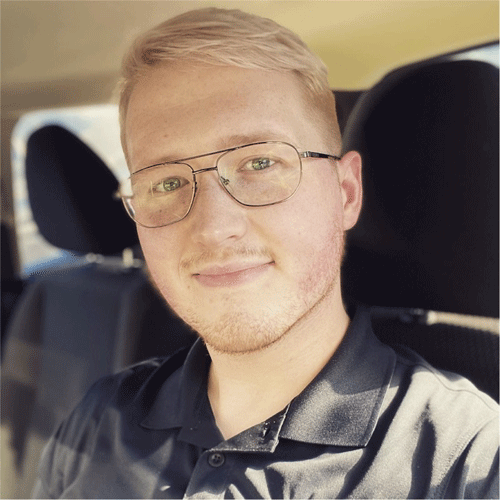A letter of intent works as a business card and must present clearly and objectively what the candidate wants. The main purpose of writing is to show your interest in a job position at an organization and how your skills are relevant to the work that the organization requires. Therefore, it is evident that the letter needs to be well prepared so that the initial image presented is positive and the type of job position being requested can be communicated clearly.
In simple words,
A letter of intent demonstrates one’s suitability for a job/department and summarizes why one should be considered for any job position in that department or organization.
The letter, in rare cases, can also be requested by the employer as a requirement in addition to your resume.
You might have a specific role in mind; however, the letter is also used to express interest in whatever opportunities the company has available for a specific skill set. It is a written document that a candidate sends to a company to let them know that he or she intends to work for them.
In addition, it gives a candidate’s application personal touches in a manner such that he or she can enlist several skills that could be showcased in personalized detail and cover certain subjective factors like objectives, vision, and mission to define their skillsets more clearly as well as allow them to show interest in a job role in a more elaborate way.
A letter of intent also helps in getting noticed by the hiring manager. Some companies may request one from you. Ideally, you can anticipate being asked, but you must follow specific instructions to come out perfect.
Free Letter Templates
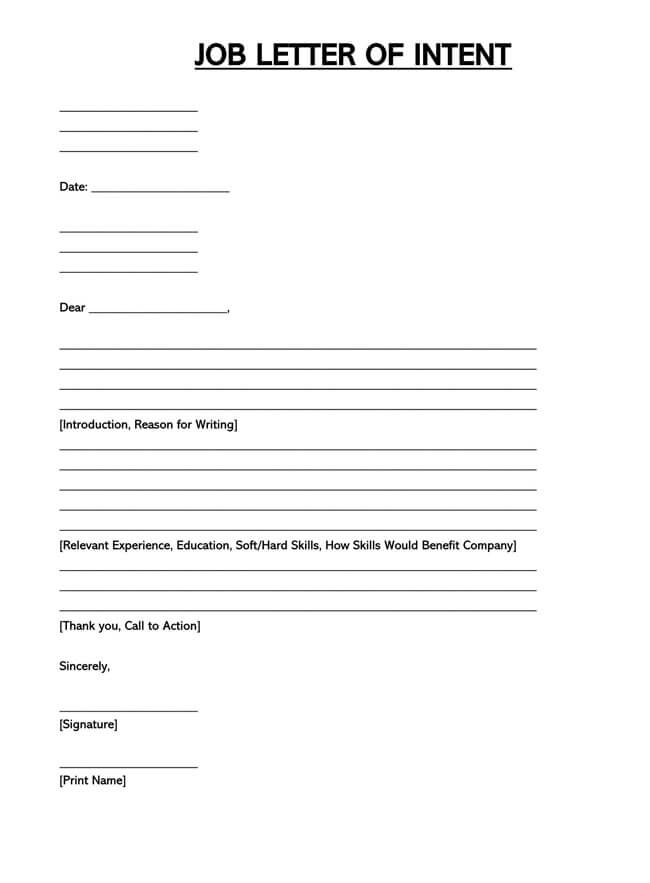
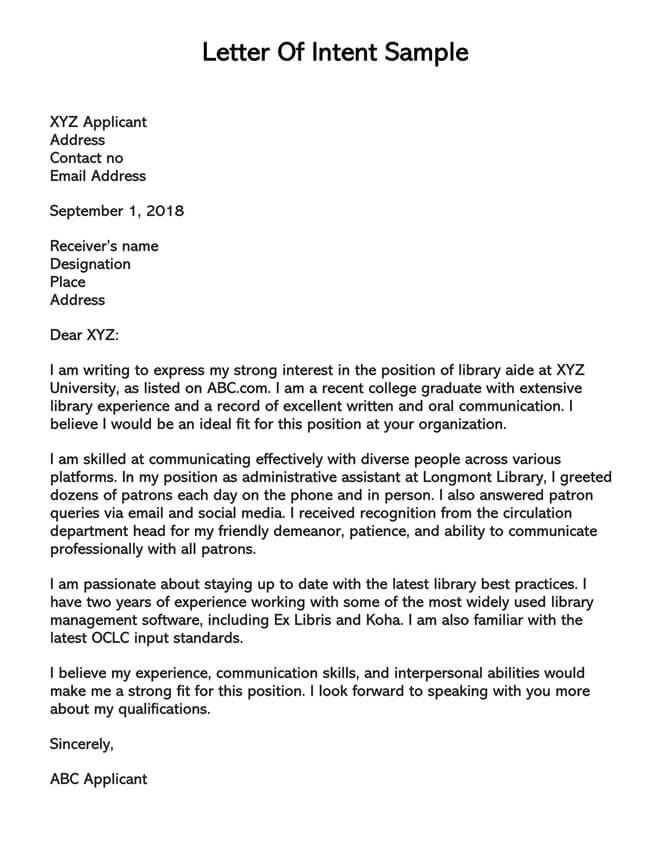
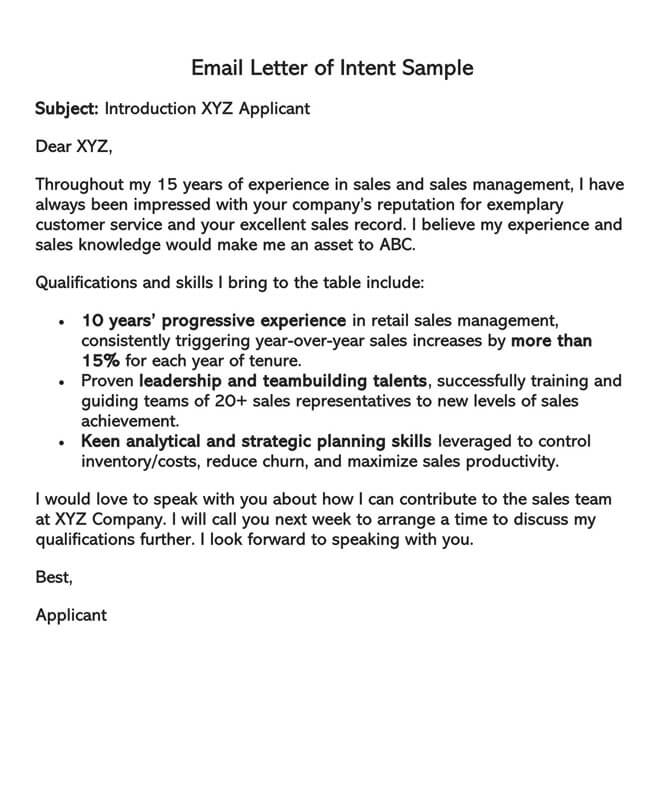
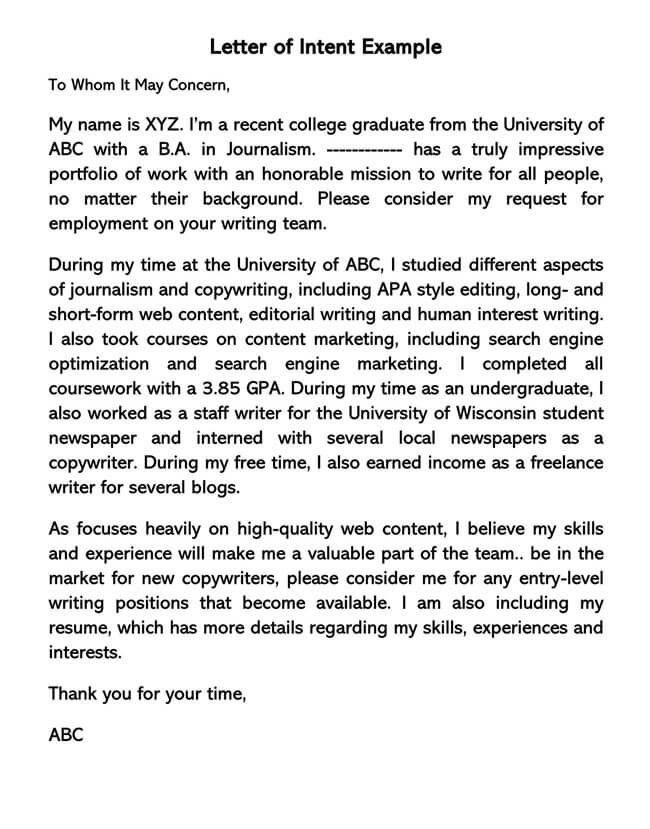
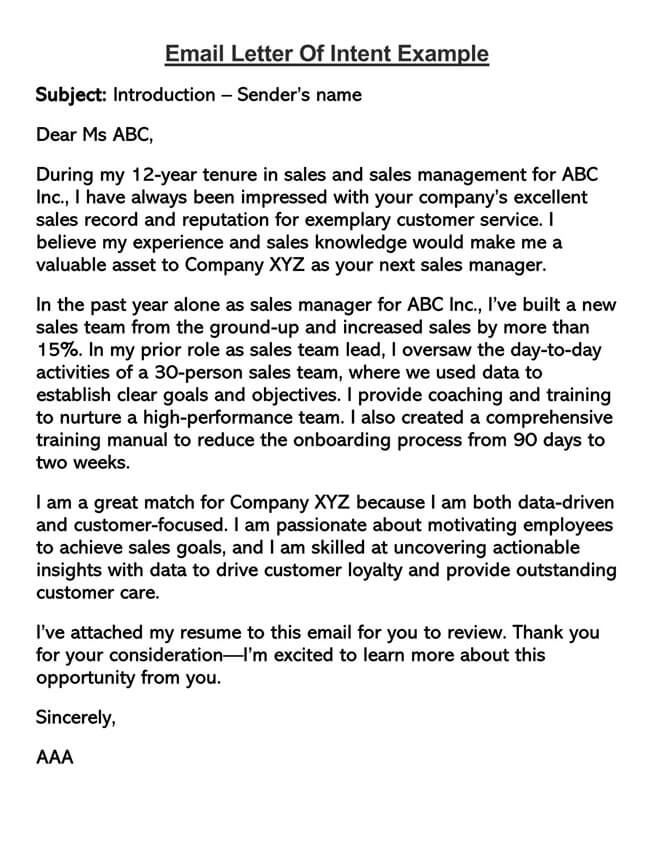
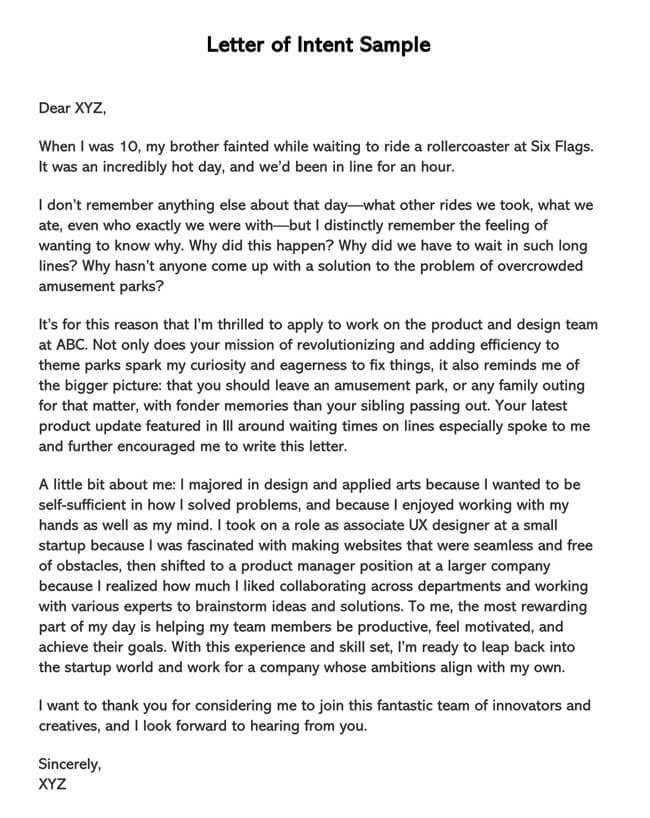
Templates (by types)
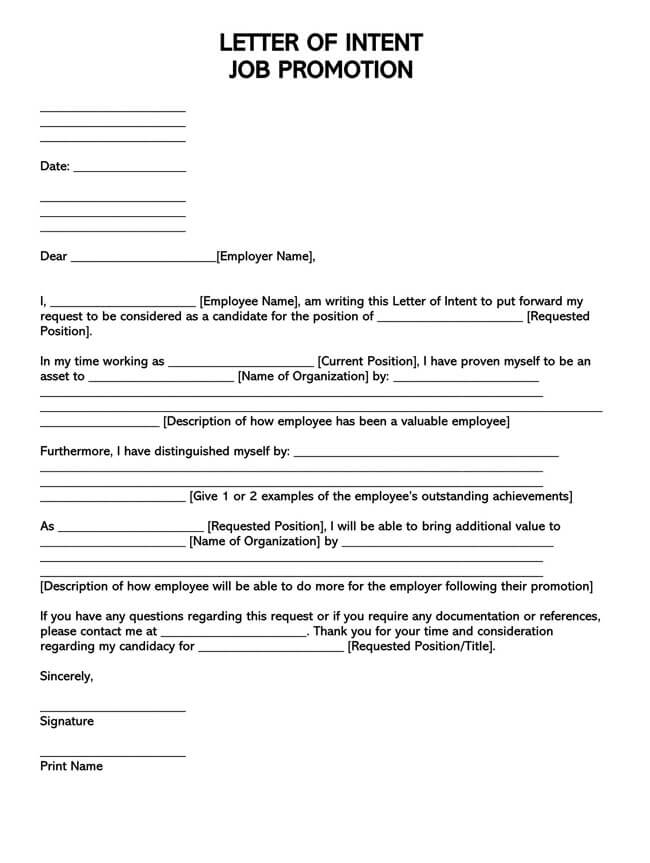
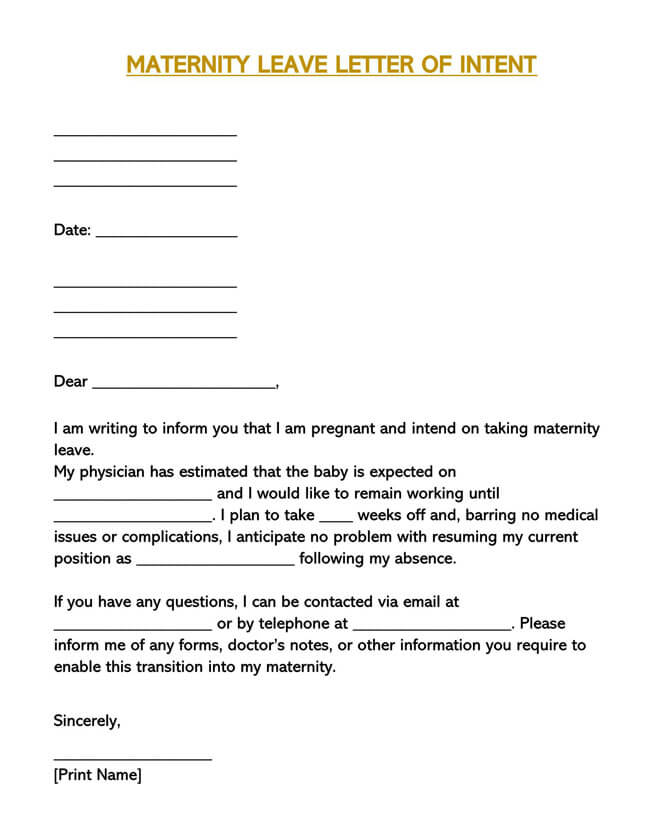
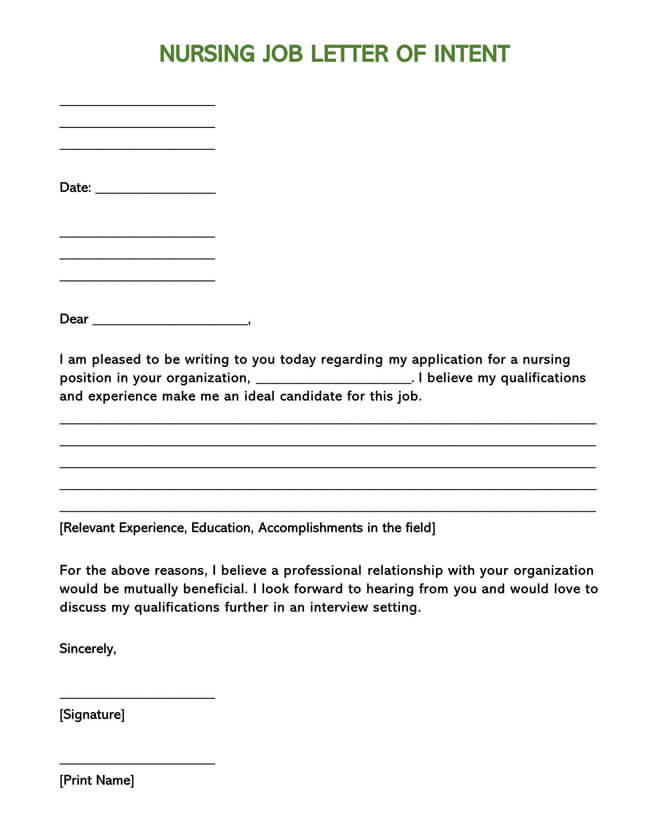
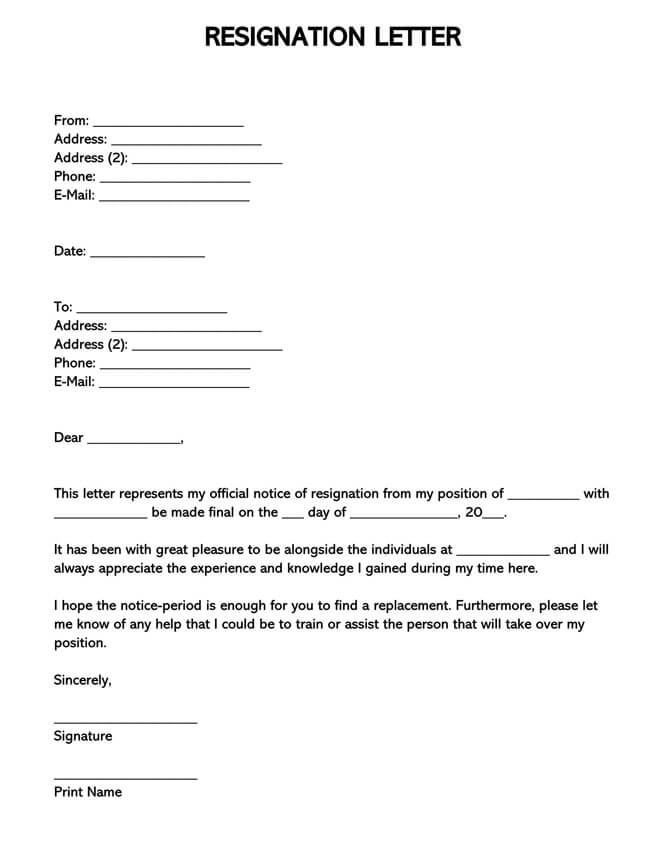
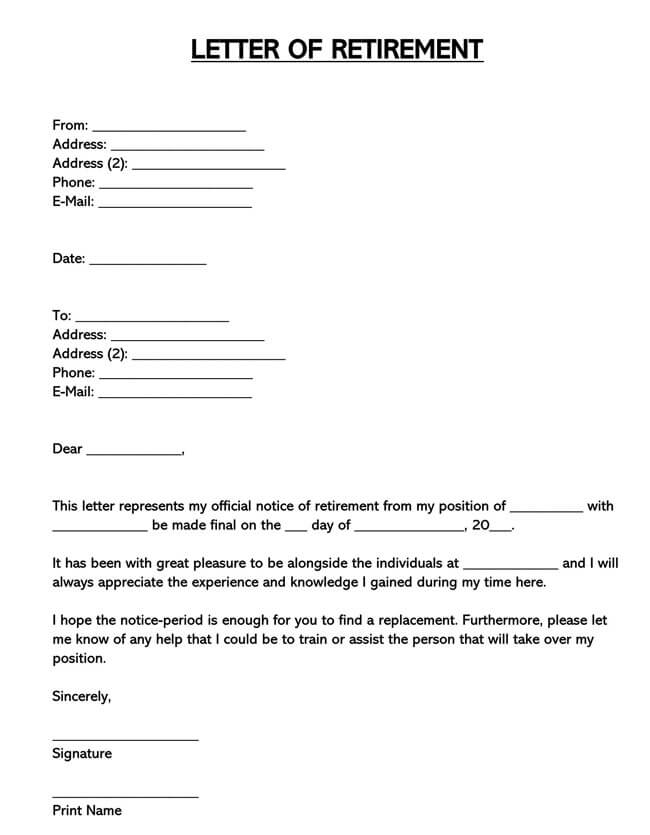
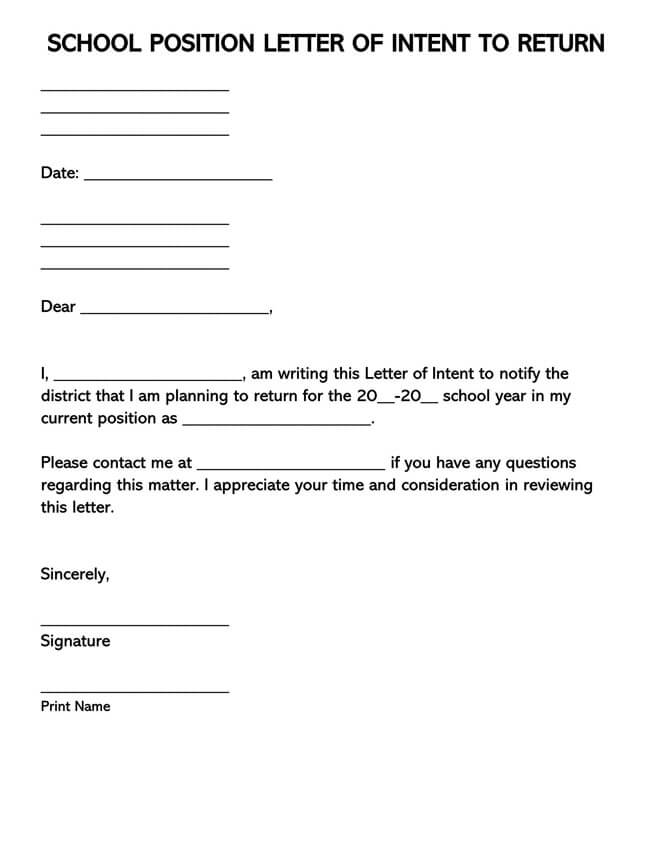

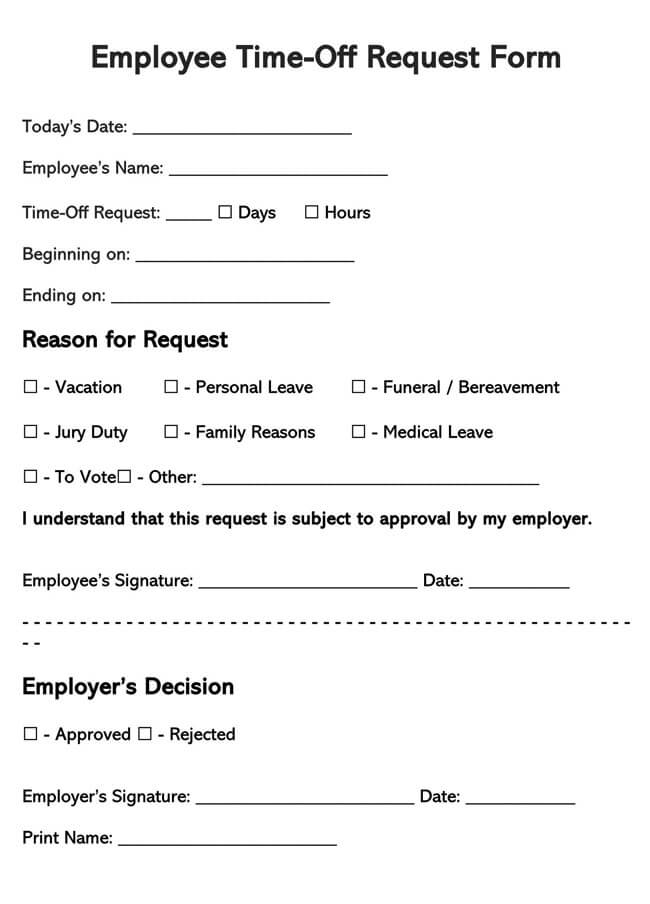
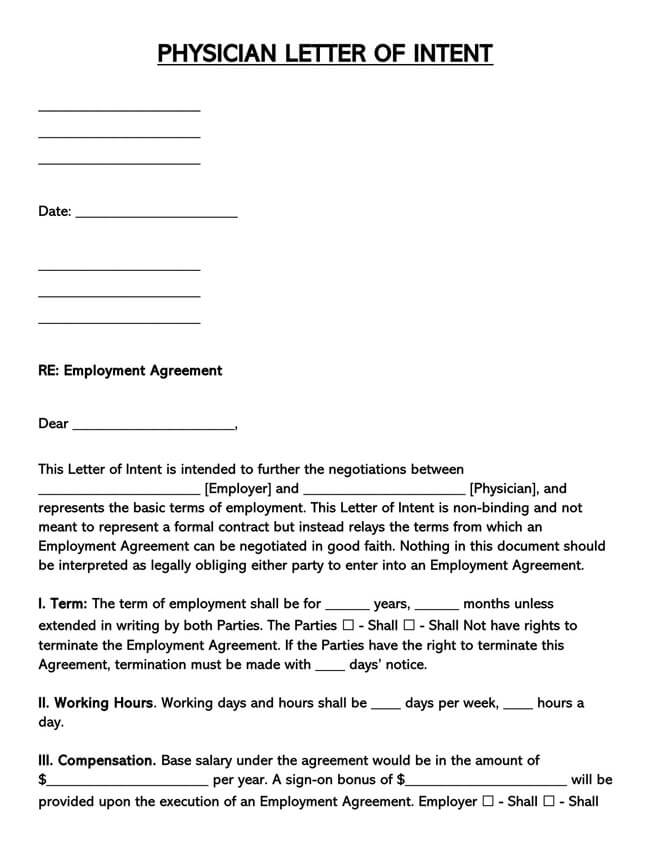
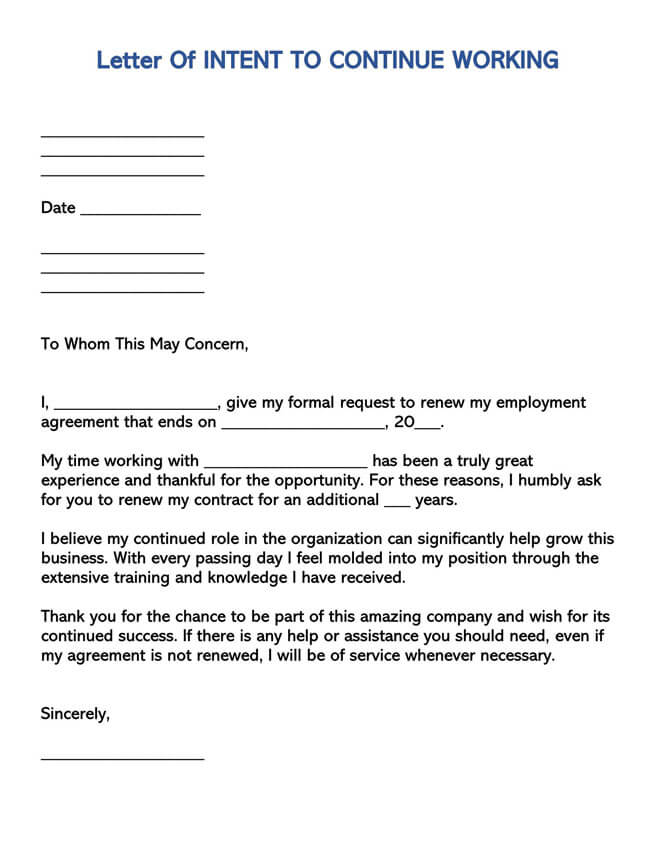
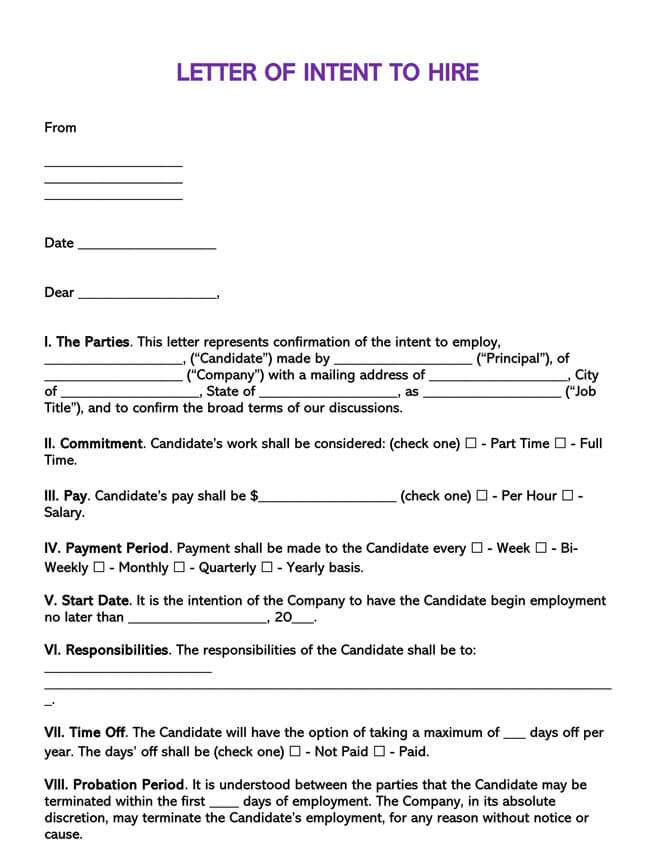
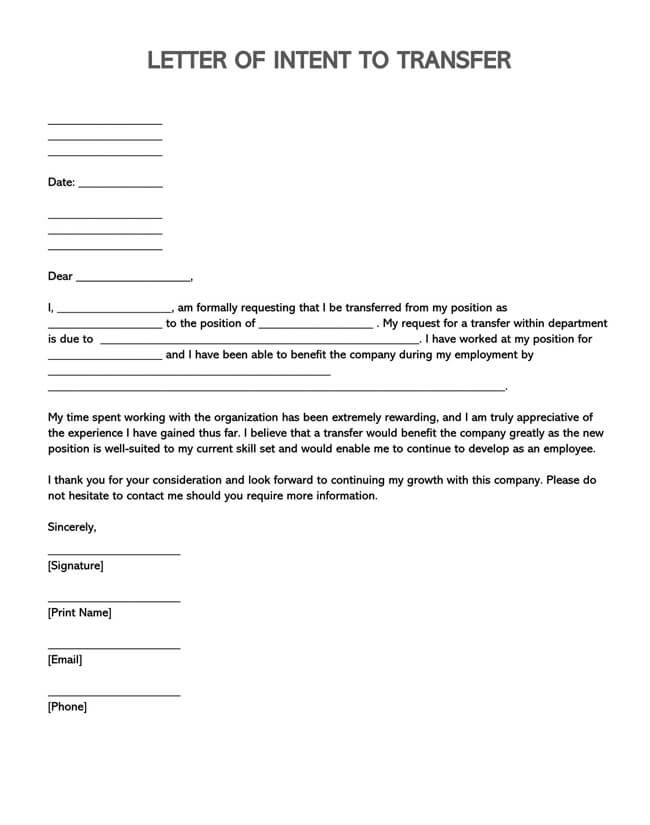
Letter of Intent Vs Cover Letter
During the selection process, some companies may require that the candidate demonstrate why he wants the job. For that, a letter can be requested, which is one of the most critical steps of the selection process, as depending on this factor, the recruiters decide whether or not to hire a candidate. Through it, the recruiter will analyze the candidate’s affinities with the position, how he can contribute to the company if he is hired, and which professional and cognitive skills stand out in his personality.
A specific job position/role is mentioned in a cover letter, while in a letter of intent, you show interest in a specific area or department.
EXAMPLE
A content writer’s cover letter will read, “I am highly interested in the content writer position at your company.” In contrast, the letter will proceed as “I am highly interested in an IT developer role at your company.”
The cover letter is usually sent along with the resume and the reason for that is to pique the recruiter’s interest in your detailed resume. In contrast, a letter of intent is generally written when you are trying to pitch a job proposal to a hiring manager.
Know When to Use This Letter
It can have several different uses in different contexts; this includes sending a letter to show interest in working for a company or as a tool to pitch a job proposal. It is also used right after a prospective employer requests it, or if there’s a job opening in a company that may or may not be directly related to your area but the employer can benefit from recruiting you. It could typically be utilized to apply for job vacancies observed at job fairs or a job advertisement pertinent to your field of interest anywhere, generally.
Setting Approaches to Writing the Letter
A good and motivating letter presents you as a skilled individual and talks about what moves one way of being, aspirations, involvement, and what brings you closer to a company. It is not a cold statement of your abilities but why you want to join an organization. Therefore, you should always customize it according to the job requirements.
The ultimate goal is to introduce yourself, show your personality, and give an impeccable image to get the company to want to meet you and perceive the positive impact you would bring to them.
More important than making clear your intention for the particular position is to show recruiters that you know and identify the company. For vacancies that require such a letter, it is not just to be excited about the possibility of earning a good salary: it is necessary to demonstrate an affinity with the required requirements.
Therefore, remember to state in the letter the reasons that led you to become interested in the job. If so, you can say that he/she identified the vacancy and the company’s role due to the possibility of growth with other employees or the company’s openness to share in the profits and teamwork.
Being excited about the possibility of contributing to the company is a crucial resource for those who want to win good opportunities in the job market and still show commitment.
Regardless of the vacancy offered, it is very likely that the company applying for the vacancy values professionals with ambition who are not accommodating and are always looking for improvements. Therefore, show the recruiter that you aim to do the best in the area that you will be responsible for.
Format of Letter
The format of the letter must be rather formal and contain all the necessary elements of a formal document, the date of writing, the subject, and the recipient’s address. The format should also be professional, choosing a classic font such as Arial, Calibri, or Times. The most used font size is 12. Thus, your letter may contain sufficient elements: that it is neither too concise nor too large. Besides, one page is sufficient for the header and content.
The following are elements that must be present in this letter:
Greeting
Since it is the first contact, the greeting must be formal. Likewise, it is necessary to take into account the gender of the recipient.
EXAMPLE
- Dear Mr. James
- Dear Mrs. Mary
If you do not know the name, you have to put Dear Mr./Mrs., Although it would be appropriate for you to inform yourself. Find out who your recruiter is by contacting the company.
Body paragraph 1
The opening lines of the letter must include a warm introduction and the purpose of writing a letter. Focus on the background and the assets you can contribute to the company in the second paragraph. Highlight two or three key points from your education or work experience that make you an optimal candidate for the position.
Body paragraph 2
In the second body paragraph of the letter, describe why you are interested in this particular company and why and how you want to work for them. Research the company as necessary to obtain this information. It is essential to capture interest from the beginning.
Call-to-action
This section references the reader to resume and thank them in advance for their time and consideration. Request that the recipient invite you for an interview so that he or she can further explore your suitability for the organization. Here, you can also include your contact information, such as your contact number.
Closing
The closing section of the letter must be consistent with the greeting. Therefore, it must be formal, respectful, and neutral. Like any formal document, include a closing such as “Regards” or “Sincerely” and a signature below your name and surname, ideally on the left side of the letter.
Sample Letters
To assist you in crafting your letters of intent for job applications, two sample letters are provided below, offering a practical demonstration of effective communication strategies in a professional context.
Letter for content writer position
Dear Mr. James,
I am writing to express my keen interest in the Content Writer position at BrightEdge Media, as advertised on LinkedIn. With a Bachelor’s degree in English Literature from the University of California and over three years of experience in content creation and digital marketing at TechSavvy Inc., I am confident in my ability to contribute effectively to your team. My expertise in SEO optimization and social media engagement, evidenced by a 30% increase in reader engagement in my current role, positions me as a strong candidate for this role.
BrightEdge Media’s innovative approach to digital marketing, especially your recent campaign on environmental sustainability, deeply resonates with me. Joining your team would not only allow me to apply my skills in a dynamic and creative environment but also enable me to contribute to projects that align with my personal values and professional aspirations.
Enclosed is my resume, which further outlines my qualifications. I would be grateful for the opportunity to discuss how my experience and skills would be beneficial to your team in an interview. You can contact me at 555-123-4567 or alex.smith@email.com. Thank you for considering my application. I look forward to the possibility of contributing to BrightEdge Media.
Sincerely,
Alex Smith
555-123-4567
alex.smith@email.com
Letter of Intent for Teaching Position
Dear Mrs. Mary,
I am writing to express my enthusiasm for the Teacher position listed on the EdJobs Portal at Greenwood Elementary School. As a passionate educator with a Master’s degree in Education from Stanford University and five years of experience in elementary teaching at Sunnydale School, I am eager to bring my expertise in curriculum development and inclusive teaching strategies to your institution. My dedication to fostering a supportive and challenging educational environment aligns with Greenwood’s commitment to academic excellence.
Greenwood Elementary’s commitment to holistic education and its innovative teaching methods, such as the “Learning Through Play” initiative, are aspects I am excited to contribute to. My goal is to leverage my experience in interactive learning, which has led to a 25% improvement in student engagement in my current role, to make a meaningful difference in the lives of students at Greenwood.
Please find my resume attached for your review. I am enthusiastic about the possibility of joining your team and would welcome the opportunity to discuss how my background, skills, and enthusiasm for teaching can contribute to the continued success of your students and school. I can be reached at 555-987-6543 or emily.johnson@educator.com. Thank you for considering my application.
Regards,
Emily Johnson
555-987-6543
Key takeaways
These two letters of intent, one for a Content Writer position and the other for a Teaching position serve as effective guides for writing similar letters due to several key elements they incorporate:
- Both letters start with a straightforward declaration of the purpose. This clarity helps the reader immediately understand the letter’s intent.
- Each letter highlights the writer’s education and experience relevant to the position they are applying for.
- Both letters demonstrate the writers’ knowledge of the organization and align their personal values and professional aspirations with the company’s objectives.
- Both writers provide concrete examples of their success in previous roles. This use of quantifiable achievements adds credibility to their claims.
- Each letter concludes with a call-to-action, inviting the reader to review the enclosed resume and suggesting a willingness to discuss their qualifications further. They also provide contact information, making it easy for the employer to reach out.
- Both letters are well-structured with a professional tone, clear greetings, and closings. This format demonstrates the candidate’s ability to communicate effectively, a key skill for both positions.
In summary, these letters are useful guides because they effectively demonstrate how to structure a letter of intent in a way that is concise, focused, and engaging.
Tips to Remember
In addition to using persuasive language, your letter must follow specific guidelines. What follows are some interesting tips when writing a motivation letter that can help us make it more effective.
Use an appropriate format
Before you start writing, pay attention to format and structure. Some companies have a specified format for the letter. If the company has not specified a format, you should go with the standard format specified in the above section.
Include a clear subject line
Applicants who send their letter by email should ensure it stands out from the others with a clear and eye-catching subject line.
EXAMPLE
Incorrect:
Application for Account Manager at the XPTO Company
Correct:
Account Manager with more than 10 years of experience.
If the company provides a reference, include it in the subject, but avoid adding contact details.
Showcase the best your own
Do not merely reiterate the information in the resume in the letter. Present qualifications and skills that aren’t so apparent on a resume. Identify the skills necessary for the position being applied for and take into account those topics that you would bring up in an interview.
Adding bullet points
Divide the letter into paragraphs, inserting a bulleted or numbered list if necessary to make the presentation of the letter as clear as possible so that the recruiter can read it easily.
Avoid criticizing previous employers
While talking about past experiences, you should mention the relevant position and the work experience you had and avoid criticizing the past employer. It may cast a negative impression on the recruiter.
Using targeted managerial roles
It is also essential that you indicate what position you are referring to and the reasons why you can perform it correctly. One of the purposes of it is to show why you want to join a company, so it’s essential to be relevant and precise; therefore, always mention the exact managerial titles, such as “Administrative Officer” or “Sales Executive.”
Don’t mention the desired salary
The desired salary is usually discussed during or, in some cases, after the job interview; therefore, don’t mention it in the letter that shows your interest in the company and the job position.
Include a reference
If you know someone already working in the company, it can be either your friend, relative or colleague; you can mention him as a reference. However, only mention someone as a reference if you have the prior consent of the individual.
Usage of professional language
Formal and active language usage can be a decisive factor in job selection; therefore, it is recommended to use active language about your skills, such as “successful sales manager” or “expert data analyst.”. However, avoid exaggerating about your skills and achievements.
Don’t write too much or too little
Balance is the key to writing the letter. If you write a long letter, it will get tiring for those reading it. However, this does not mean you can write a message with just one paragraph either, so be careful when formulating very long sentences. If the letter is to be emailed, make the paragraphs better distributed, making it easier for the recruiter to read.
Proofread your letter
It is essential to proofread the letter before sending it to the employer. Pay attention to possible grammatical or spelling mistakes in the text; after all, nobody wants to be disqualified from a selection process just because of the grammar. Therefore, after completing the letter, ask a friend to proofread it. We often miss silly mistakes due to sheer inattention, which can be more easily revised when a third-person analyses.
Frequently Asked Questions
The candidate should introduce himself with enthusiasm for participating in the selection process or, at the outset, show that he is best suited for the job position by highlighting academic or training performance.
Yes, a letter of intent is a formal document and should be double-spaced.
